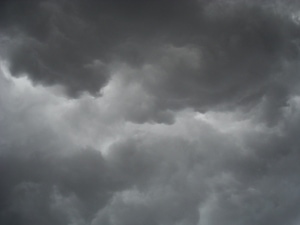By Ann Dixon Coppage, MAEd, LPCS, Director of Client Services at Trinity Center, Inc
“It’s dark and cold and this season is supposed to be joyous?!? Instead I feel tired and cranky and like I can’t get enough sleep!” Sound familiar? Are you struggling to keep your head above water? Feeling less enthusiastic, less social, more irritable and fatigued, more inclined to stay indoors, working less effectively, and eating more? For many of us, feelings like these last for an hour or two, or maybe a day. For those who suffer from Seasonal Affective Disorder (SAD), these symptoms recur about the same time every year, last for several months, and make daily living very difficult.
People with especially severe cases find it difficult to study or hold down jobs during their “sad” season because they feel so lethargic or sleepy and have such difficulty concentrating. For the majority of people with SAD, these low moods occur in the winter, but some experience these seasonal mood changes in spring or summer. Women are more likely to suffer from SAD than men (estimates say 60-90% of SAD sufferers are women). Although SAD primarily affects adults, some children and teens suffer from it as well.
These kinds of changes in mood, energy and initiative strain relationships and make carrying out the routines of normal family living a challenge. When you add holiday expectations and excitement, SAD sufferers can sink into despair.
Because we all have occasional bad days, SAD is often misdiagnosed or overlooked, leaving the SAD sufferer feeling even more isolated and depressed. The truth is that once someone has experienced two or three seasons (same time of year) of symptoms described above, they fit the diagnosis criteria for Seasonal Affective Disorder, a condition that gets better with proper treatment.
The exact causes of SAD are unclear. Your genes, age and body’s chemical makeup all play roles. Reduced sunlight in fall and winter combined with the start and stop of daylight savings time disrupt your internal sense of when you should sleep or be awake (circadian rhythm). In turn, this interferes with your body’s production of melatonin ( a natural hormone that plays a role in sleep patterns and mood). Seratonin, a neurotransmitter that affects mood, is also affected by season change. These factors are thought to cause the SAD sufferer’s increased feelings of depression or agitation.
Treatment for seasonal affective disorder will not cure the seasonal depression, but it helps relieve symptoms. Light therapy is the main treatment for SAD, and research is continuing to determine the most effective way to use it. Medicines and counseling may also be helpful. Since SAD affects so many facets of the sufferer’s life, most people find that a combination of light therapy, medication and counseling yield the best results.
If your life, work and relationships are being negatively affected by the season changes, don’t pretend everything is fine. If your symptoms are mild, try getting more daylight, staying physically active and consider a vacation in a sunny place. If none of these steps help or your symptoms are moderate to severe, speak to your doctor, counselor, pastor, or trusted friend about what you are experiencing and where to go for help. What a difference it will make in the quality of your life and the lives of those who love you!
Has this ever happened to you? Can you share additional advice?
















